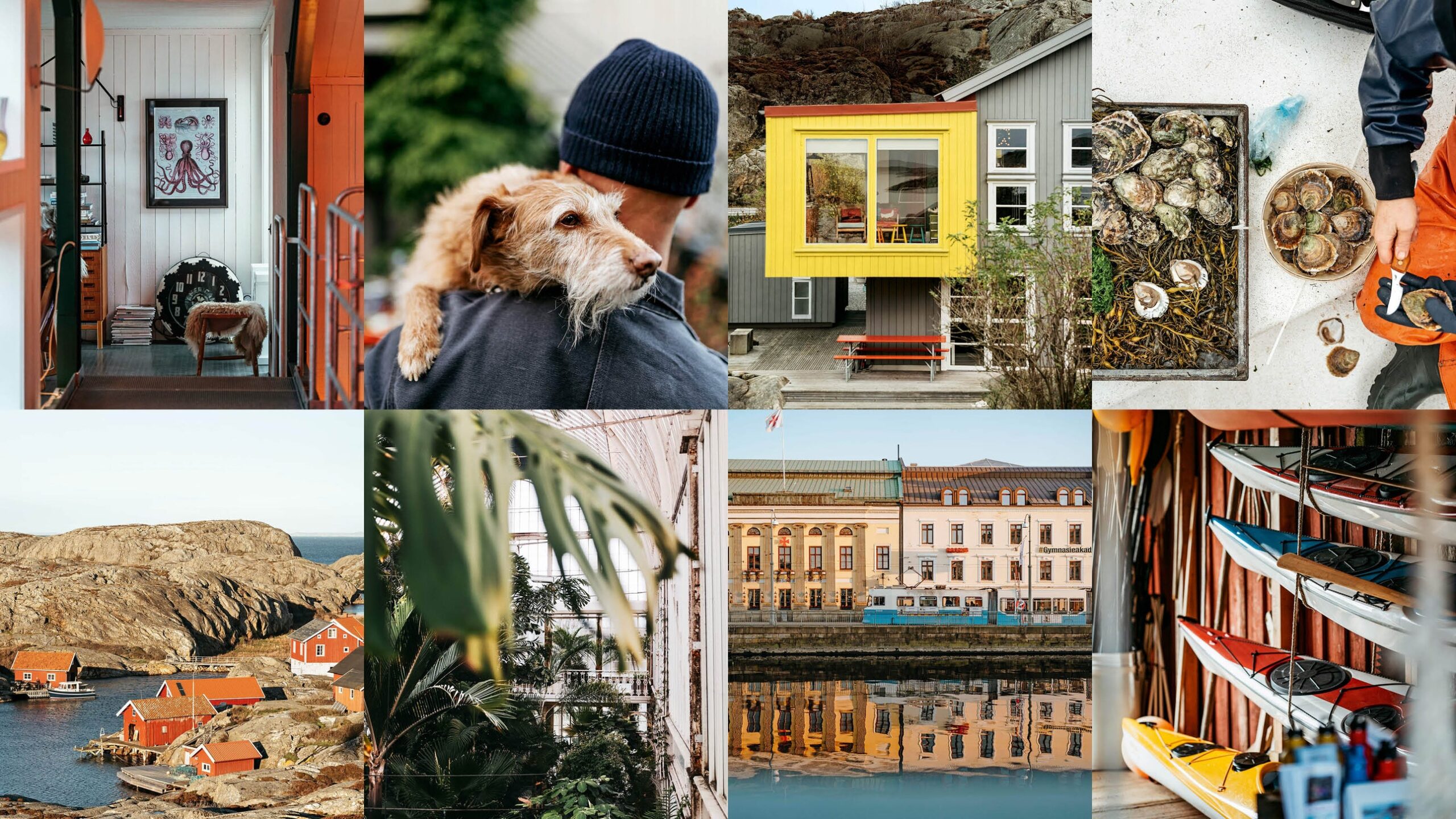Out on the edge of the Weather Islands, the weather is a force of nature. On this unique archipelago located north-west of Gothenburg, the wind dominates, rushing and snarling over barren slabs of greyish granite. This rocky expanse serves as a safe haven for yawning seals, turbo-clawed lobsters, and one of Sweden’s rare living coral reefs. The meteorological station here ranks among the most notable in the Swedish shipping forecast, with gusts from the Skagerrak strait often exceeding those registered elsewhere.
From the wood-fired hot tub at the Weather Islands Guesthouse, visitors can witness the autumnal sun casting a warm glow on the rocks, while shadows lengthen over the nearby cabins. These cabins represent the only signs of civilization apart from an old sea pilot’s lookout tower. Approximately 40 minutes by catamaran from Fjällbacka, a charming town known for its picturesque jetties and stilted huts, this remote oasis leaves a lasting impression.
The Journey Along Bohuslän’s Coast
Embarking on a journey along Bohuslän’s rugged coastline, one can appreciate the stunning vistas while driving an electric Polestar 2, a sleek vehicle that reflects Gothenburg’s innovative spirit. As you travel, the clapboard-and-driftwood architecture of the villages impressively contrasts the wild, unyielding seas and frigid atolls. This natural beauty, coupled with close proximity to Gothenburg, showcases why Bohuslän has emerged as a champion of community-driven eco-awareness.
Local Experiences and Gastronomy
Before reaching the islands, a memorable stop at Lådfabriken in Edshultshall—a whimsically designed B&B in a former fish-crate factory—proved to be a delight. Hosts Johan Buskqvist and Marcel van der Eng, warmly welcomed me into their home, where they celebrated a lifestyle of mushroom foraging and beach clean-ups with their two adorable rescue dogs from Barcelona. A day trip to the town of Möskall, where local fishermen like Jan-Erik Larsson prepare freshly caught langoustines right on the jetty, exemplified the area’s commitment to fresh, sustainable seafood.
In Grebbestad, known as the oyster capital of Sweden, local fishermen demonstrated the sustainable harvesting of native flat oysters—delicate, nutty morsels that also contribute to the health of the ecosystem by filtering the water.
Respect for Nature
Further south, Ingela and Marcus Holgersson, founders of the Skärgårdsidyllen kayak school, engage locals in beach clean-ups, demonstrating their commitment to preserving the area’s natural beauty. This respect for the environment is mirrored at the Weather Islands Guesthouse, which operates on solar energy and includes a facility for desalinating seawater for drinking purposes. Here, amidst the harsh coastal conditions, I found an overwhelming sense of wellbeing and tranquility, culminating in an experience that reaffirms my connection with nature.
In conclusion, the Weather Islands represent not only a breathtakingly beautiful destination but also a model for sustainable tourism, community involvement, and respect for the natural environment.
-

A sauna at Väderöarna Värdshus -

Cabins on the coast of Väderöarna Värdshus -

Frihamnen sauna in Gothenburg, built from recycled materials -

The Polestar 2




